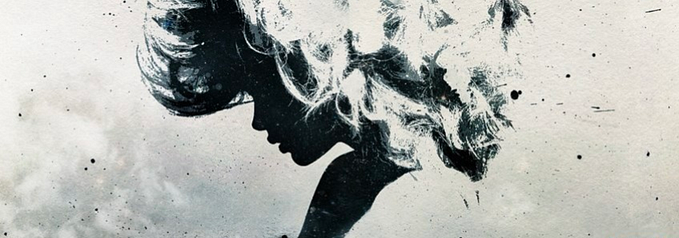The 5 wounds of the soul: what mask(s) do you wear?

We all wear a mask. Sometimes even several masks…
According to Lise Bourbeau, author of the book “Heal your wounds and find your true self”, there are 5 major wounds that we face on a daily basis: the woundS of rejection, abandonment, humiliation betrayal, and injustice . When one of these injuries is activated, we adopt a mask, that is to say a behavior that does not really correspond to who we are or what we would do in a normal situation.
The masks are visible in the morphology of the person. The body is so intelligent that it always finds a way to let us know where our suffering is and what we need to improve. The body is the only language that does not lie, with the look.
In the case of several injuries, the body will first express the predominant injury on the psychic level. The body will therefore have an overall morphology associated with the main injury, while allowing a glimpse to a lesser extent of the other injuries in more localized parts of the body. The most eye-catching injury is the one that the person suffers most often and in greatest intensity.
By reading the summaries that follow for each mask, you can easily determine which one (s) you are wearing.
1. The fleeing mask : wound of rejection

Rejection is a very deep wound, because people who suffer from it feel rejected in their being and especially in their right to exist.
Origin: Injury experienced with the same sex parent between the moment of conception and the age of one year.
Morphology: This mask is easily recognized by a fleeing physique, that is to say a body or a part of the body which seems to want to disappear or to be made very small. As if the runner wanted to go unnoticed for fear of being rejected. It is a dry, thread-like and contracted body: one has the impression that there is almost no flesh between the skin and the bones.
Behavior: The fleeing person is a person who doubts his right to exist. He seeks solitude because if he received a lot of attention, he would be afraid of not knowing what to do. The runner prefers not to get attached to material things because they would prevent him from fleeing. He wonders what he is doing on this planet and he can hardly believe that he could be happy here and bring something to this world. When it gets too much attention it loses its means.
Relationships with others: The person who suffers from rejection is constantly seeking the love of the same-sex parent, or transferring his quest to people of the same sex. With the parent or people of the opposite sex, she will rather tend to reject herself, to feel at fault if the other rejected him. He usually speaks little in a group: he is afraid of disturbing and not being interesting. He often lives in ambivalence: when he is chosen, he does not believe him and rejects himself to end up sometimes sabotaging the situation which values him; when he is not selected, he feels rejected by others.
Vocabulary: nonexistant, null, nothing, disappear
Biggest fear: panic
2. The addict mask : wound of abandonment

The wound experienced in the case of abandonment is the second deepest after that of rejection because they both affect being.
Origin: Injury experienced with the parent of the opposite sex between one and three years old.
Morphology: The addict’s body lacks tone. Long slender body with a rounded sagging back. As if the spine and muscles were unable to keep the body upright. The addict’s body seems to need help holding up.
Behavior: Those who suffer from abandonment do not feel emotionally nourished enough. They are in constant need of help and support. The addict thinks he can’t do it all by himself and he needs someone to support him regularly. He often has ups and downs: for a while he is happy and everything is fine and suddenly he feels unhappy and sad. He is a person who dramatizes a lot: the smallest incident takes on gigantic proportions. In a group, he likes to talk about himself and often brings everything back to him.
Relationships with others: The addict usually requests the opinion or approval of others before deciding. He doesn’t make up his mind or he doubts his decision when he doesn’t feel supported by someone else. And when he does something for someone, he does it with the expectation of a return of affection. The addict is the one of the five wounds who is most likely to become a victim in the dramatic triangle of Karpmann. Her problems bring her the gift of attention and it keeps her from being abandoned. The more a person acts as a victim, the more their abandonment injury increases.
Vocabulary: absent, alone, “I can’t stand”, “I’m being eaten”, “I gave up”
Biggest Fear: Loneliness
3. The masochist mask : woundof humiliation

This injury is mainly related to the physical world: that of having and doing.
Origin: It awakens during the development of physical body functions (eating alone, being clean, going to the bathroom alone, talking, listening, understanding conversations, sexuality, etc.). It is generally experienced with the mother or with the person in charge of learning the physical and sexual functions mentioned above.
Morphology: Large body, plump, round face, large, bulging neck, bison hump in the upper back.
Behavior: The masochist is frequently ashamed of himself and others or afraid of being ashamed. He thinks he is dirty, messy. He does not want to recognize and assume his sensuality as well as his love of the pleasures associated with the senses. That’s why he compensates and rewards himself with food. And he grows easily to give himself a reason not to enjoy his senses. He is also afraid of being “punished” if he enjoys life too much. Thus he gags his freedom by putting the needs of others before his own, so as not to enjoy life.
Relationships with others: The masochist seems to want to do everything for others. In reality, he wants to create constraints and obligations in order not to enjoy his freedom. It also reinforces this feeling of being abused and humiliated. And in the same way he tends to lower and humiliate others by making them feel that they cannot do it alone without him. The masochist is often inclined to blame himself for everything and even take the blame for others. Masochistic people are also very sexual: they would often make love if they allowed themselves the pleasure of the senses. But very often they dare not tell their partner about it for fear of being ashamed of wanting it so often.
Vocabulary: dignified, unworthy, small, fat, pig, dirty
Biggest fear: freedom
4. The controller mask : wound of betrayal

The controller’s wound (betrayal) is intimately linked to the addict’s wound (abandonment). While abandonment is about being, betrayal is about having and doing.
Origin: lived with the parent of the opposite sex between the ages of two and four, at the time when sexual energy develops, generating the Oedipus complex.
Morphology: Body that exhibits strength and power. In men: shoulders wider than the lower body. In women: lower body wider than the shoulders (pear-shaped body). The greater the asymmetry between the upper and lower body, the greater the betrayal injury.
Behavior: Very uncompromising, the controller wants to show others what he is capable of. He often interrupts and responds before the other party has finished. When things don’t go quickly enough for his liking, he experiences anger. He considers himself hardworking and responsible: he has difficulty with laziness. The controller hates to be trusted. He does not always keep his commitments and promises or forces himself to keep them. He is impatient and intolerant. He confides with difficulty and does not show his vulnerability.
Relationships with others: The controller has great difficulty in accepting the cowardice of others. He has difficulty delegating tasks while trusting others. Among the 5 wounds, the controlling is the one who has the most expectations of the others because he likes to foresee and control everything. Unlike the addict who has expectations of others because he wants to be loved and supported in his abandonment injury, the expectations of the controller are to verify that others are doing what they need to do in order to check if he can trust them. He strongly affirms what he believes and expects others to agree with his beliefs. He tends to assert his point of view categorically and seeks at all costs to convince others. He thinks that when someone understands it, he agrees with it, which unfortunately is not always the case.
Vocabulary: “I am capable”, “Let me do it alone”, “Trust me”, “I don’t trust him”, “Did you understand?”
Greater fear: disengagement, separation, dissociation, denial.
5. The rigid mask : wound of injustice

The wound of the rigid person (injustice) is intimately linked to the injury of the fleeing person (rejection). While rejection touches deeply on being, the wound of injustice touches on having and doing.
Origin: Injury experienced with the same sex parent between the ages of about four and six, when the child becomes aware that he is a separate entity with its differences.
Morphology: Straight, rigid body, and as perfect as possible. Well proportioned, small size tightened by a garment or a belt. Rigid movements. Stiff neck. Right of pride.
Behavior: The rigid is a living person with dynamic movements but who are rigid and lack flexibility. He is a perfectionist and envious. He cuts himself off from his feelings and often crosses his arms. He seeks to be perfect and justifies himself very much. He finds it difficult to admit that he is having problems. He often doubts his choices. He likes order and tends to control himself by demanding a lot from himself. He can be short-tempered and cold and has trouble showing affection. The rigid does not like being late but it will often be because it takes a long time to prepare. He himself misses the point because he tends to exaggerate things by using the words “never” “always” or “very.”
Relationships with others: When he is moved, the rigid does not want to show it but we can see it in his tone of voice which becomes dry and stiff. The rigid likes that those who open it are aware of everything it has done and all that is involved. Unlike the controller who acts in the same way to show that he is responsible, the rigid acts thus to prove that he deserves a reward. The rigid finds it difficult to receive gifts because it then feels indebted.
Vocabulary: “no problem”, “always”, “never”, “very good”, “rightly”, “exactly”, “agree ?”
Biggest fear: Coldness
So… When reading this article, what mask(s) do you think you are wearing?









